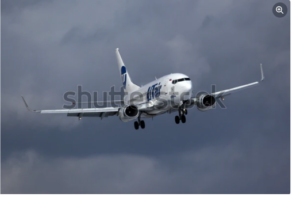Crosswinds, anyone?
Its springtime! Windy, gusty days are here, and the weather patterns are changing while we go from winter to summer weather. Do you hate trying to land on windy days with crosswinds? I used to! So you are not alone
Yep, back when I was learning to fly, crosswinds were a BIG challenge to me in the Cessna 150 that I was flying. Lots of work, and lots of over-controlling and bad bounces trying to get it right, cross controlling with the ailerons and rudder! It was a real challenge, especially on a narrow runway! I scared myself many times!
I was over controlling of course, hands (ailerons/elevator) and feet (rudders) out of sync and bouncing down the runway!?! Oh my!! My first crosswind landings were ugly!! Maybe controlled crashes would be a better description. Fortunately, the Cessna 150 has very sturdy, forgiving landing gear, and it took the punishment well. Oh yeah. It took time to figure them out. But, I survived and eventually figured out the technique!! Now I use it on everything that I fly, adapting as necessary on the wide variety of aircraft I have flown over the years.
So, how do you feel about crosswind takeoffs and landings? Maybe you try to avoid them. Many pilots do. Takeoffs seem to be easier. Landings are a challenge, depending how strong the winds are and what you are flying. Every airplane will be a bit different.And, guess what? Crosswind landings are discussed in the March 2024 issue of Aviation Safety (AS) Many pilots have trouble with crosswinds. They don’t get enough regular practice. ‘AS’ calls it crosswind authority! In other words, are you using enough of the airplanes ‘control authority’, which means are you using the rudder enough?
So, how do you know if you have a crosswind? Easy enough. Either the ATIS or ASOS/AWOS will be reporting the winds, and the windsock will show it as it stands straight out and moves with the wind. And you can watch the airplane ahead of you on final, if there is one, to see how it is doing. And when on final approach, the airplane will not stay lined up with the runway. It will be drifting off to the downwind side, with the wind. So, your challenge is to stay lined up with the runway on final, correcting as needed.
Some days it takes constant small corrections. Just depends. Then, when you finally get into the flare, I personally maneuver so as to line up on the upwind 1/3 of the runway, with a bit more speed than normal, and when I am in the flare, with speed dissipating, the airplane will be drifting towards the centerline, and I am applying aileron INTO the wind as needed, and opposite rudder as needed, in an attempt to stay lined up over the centerline. And I apply enough forward pressure, as needed on the yoke, and carry enough power as needed, to keep control, and then try to apply enough upwind aileron to have the upwind tire touch down first, then roll out slightly to the opposite side to lower the downwind tire onto the runway, and finally lower the nose to get it firmly on the runway and tracking straight, before applying the brakes.
Notice I keep saying, ‘as needed’ above, for everything. That is because, you have to constantly adjust the flight controls and throttle during a crosswind landing. It can be different every time. Lots of corrections, as needed!
And I also use a lesser flap setting, 0, 10 or 20 instead of 30 degrees. Less flaps gives you more speed and more control, which is what you want in a crosswind landing, depending how strong the crosswind is.
There. That’s a lot but it is a busy-few-seconds while you do this and keep control. No time to look inside. You are looking outside and taking it all in, and are ‘dancing on the controls’ as they say, whatever it takes! After a while, with enough (lots of) practice, it will get easier. I am not sure if I could describe it any better. This is just from my having done/practiced 1000’s of crosswind landings, literally, over 4 decades of flying, in many different aircraft.
Do you need help with crosswind landings? Get in touch with me and let’s schedule some crosswind landing practice in the airplane you are flying! Good luck!
Fly safely,
John.




